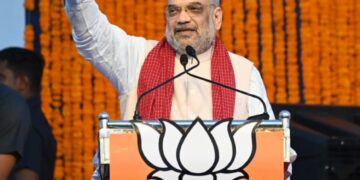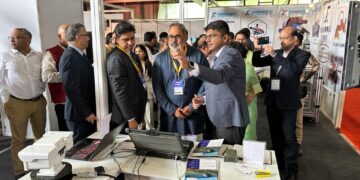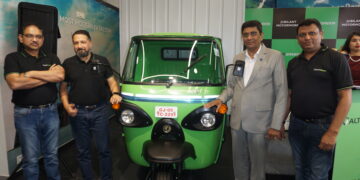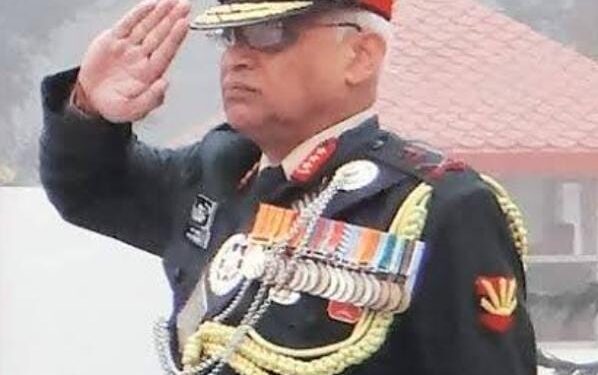STRAP: It is an undeniable fact that technology is the backbone of any military power and together with economic strength, it helps the Nation to emerge at the global level as a dominant power.
- Though the defence industry in India came up more than 200 years ago with Gun and Shell factory coming up at Cossipore, but the Department of Defence Production was created only post the conflict with China in 1962. However, after the 1965 war with Pakistan, India’s trust on the United States (US) got back stabbed when the US, without any justifiable reason, went ahead and put embargo on arms sale to India. Thus, a new era of friendship began with the Union of Soviet Socialist Republic (USSR) when India, left with no other choice, entered into a long-term defence relationship with Soviet Russia. Though, over a period of time, India slowly developed number of ordnance factories, several laboratories, R&D centres etc but, somehow, India continued to remain as one of the largest importers of defence equipment and third largest in military spending.
India – an Emerging Global Power
- It is an undeniable fact that technology is the backbone of any military power and together with economic strength, it helps the Nation to emerge at the global level as a dominant power. Despite India being blessed with no dearth of talented workforce, natural resources and favourable climate and above all, having a great geographical advantage of jutting into the Indian Ocean Region, the nation still could not rise up enough to be identified as a regional power in the last 75 years of independence.
- The Armed Forces of all developed countries have been rapidly enhancing their defence capability since many decades. Both the US and China already being way ahead of all the countries in the world, somehow, India did not remain so focussed till a distinct change started to get visible from the year 2014 onwards. While today, Russia is still India’s main supplier of arms followed by France, but now, the drive towards ‘Make in India’ has started to generate major visibility in the growth of defence production. Notwithstanding the budget constraints, the current Government of India (GoI) under the Atamnirbhar Bharat scheme which is a vision of Prime Minister Narendra Modi, has initiated major military modernisation programmes utilising the emerging technologies.
BLURB: Within few years, including the period of two years of the Corona pandemic, India has managed to turn into a fastest growing major economy globally surpassing even China.
Role of Competent National Leadership
- This year, the Nation celebrated its 75th year of Independence calling it “Azadi Ka Amrit Mahotsav” and soon will organise the Defence Expo 2022 at Ahmedabad. Yes, it is now, a time to cheer up. In the year 2014 the country was fortunate to see a bold and decisive leadership taking over the reins of power. As a result, within few years only, including the period of two years of the Corona pandemic, India has managed to turn into a fastest growing major economy globally surpassing even China. Today, with a GDP of $3.37 trillion and with defence and technology related exports touching a figure of Rs13000 crore, India is now seen as the fifth largest economy in the world.
- What has brought about this big change? Undoubtedly, it was the Atamnirbhar Bharat, the vision of Prime Minister Narendra Modi, under which the defence sector finally got a long-awaited big boost. This big push was given under a well-planned roadmap, treating it as a critical sector for boosting the Indian economy. The road to indigenous defence production has the potential for tremendous growth which will promote indigenous design, development and manufacturing of defence equipment, platforms, systems and sub-systems. It also helps to enhance the role of MSMEs in the defence industry. The Defence sector has been opened for participation by the Indian private sector with FDI coming through the Govern route and refining Defence Acquisition Procedure (DAP) 2020 as well, with the thrust on attracting Investment and Technology for defence manufacturing.
Make In India – the Route to Progress
- The Prime Minister’s big push to ‘Make in India’, is a reality for all of us to see where defence export has risen to almost eight times compared to what was just five years ago. While India is now seen as an emerging major arms supplier at international level and at the same time making arms for itself, thus reducing imports, one major issue which the current Government identified and has handled well, was the involvement of middlemen. The Prime Minister did accept the indispensability of agents for defence imports, but now these agents have to register themselves and help the Government in processing the deals through laid down process and transparency in the best interest of the country. This can be called as one of the major and bold reforms which has enforced transparency and accountability on the part of the so-called middle men. As a result, an effective check has been put on corrupt practices in making any deal for purchases and individuals making massive money which was a well-known prevailing ecosystem till few years ago.
- Today, India is already a nuclear-armed power and with ISRO having launched 104 satellites in 2015 (highest in the world) from a single rocket through PSLV-C37, India has now emerged as a space power that has also successfully launched foreign satellites. Thus, with India moving at a rapid pace on its scientific development and manufacturing of advanced weapon systems, next generation combat aircraft, war ships, submarines, developing Artificial Intelligence, advanced air defence system and a resultant a strong economy, the Nation will certainly emerge as a global power rubbing shoulders with the US and China. Thus, if India looks at maintaining strategic autonomy without getting into any binding alliance, then ‘Make in India’ must continue to be looked as an indispensable catalyst to strategic autonomy and thus, needs to be pursued with a defined bold path and the prevailing resolve. The year 2018 had seen the GoI taking a major policy decision to set up two defence production corridors, one each in Uttar Pradesh and Tamil Nadu. Now Gujarat, too, will be setting up a defence corridor soon. Taking similar great initiative, States of Maharashtra, Telangana, Andhra Pradesh and Karnataka, too have come forward to set up defence manufacturing hubs, thus, contributing to the anticipated growing indigenous arms export and taking the Indian economy to greater heights. Hopefully, more States that have no dearth of land, work force and access to sea port, would rise above the confinement of local political priorities and move ahead to contribute towards the Nation building to enable it to attain higher goals at the Global level.
- Indigenous defence production will certainly provide umpteen avenues in multiple domains and thus enhance job opportunities for the younger generation and help in curtailing brain drain. This is, therefore, the right time to work out a process to reach out to the younger generation to start giving them an exposure to not only understand the intricacies of defence production industry, business houses, technology etc and great opportunities available, but also give them an exposure to prevailing global security scenario and where India fits in. Such an initiative will help us catch the right eye at the right time.
BLURB: If India is aspiring to emerge as a global power by mid-century, then undoubtedly the current generation will have to understand the intricacies of the Fifth-Generation warfare and resolve to stand firmly behind the GoI to defeat the hidden enemy.
Unity in Diversity
- However, we must not ignore one major fact that any nation that aspires to rise up as a big power at the global level to call the shots, also needs to be prepared to look beyond its border threat. We have to carefully look into the multiple domains within the country which provides the opportunity and space for other powers feeling threatened to exploit to their advantage. Though India is blessed with a diverse society following common practices and way of life, unfortunately due to certain divisive narrative traditionally set by few ambitious and self-centred political leaders, the society starts to look as a fractured society. With nearly 3000 major castes and 25,000 sub-castes in the Hindu religion besides nine recognised religions, 22 constitutionally recognised languages covering 29 states, gives a picture of lack of unity of ethos and a sense of integration leading to absence of a strong sense of a common national identity. There is no dearth of pseudo arm chair intellectuals, foreign funded NGOs and certain print and electronic media that become an extended arm of the inimical forces in creating internal turmoil to keep the country fragmented and the GoI on the back foot, resultantly containing the path of progress and development of the Nation. If India is aspiring to emerge as a global power by mid-century, then undoubtedly the current generation will have to understand the intricacies of the Fifth-Generation warfare and resolve to stand firmly behind the GoI to defeat the hidden enemy. Or else, nothing will change on the ground except the time in the clock and year in the calendar.
Author: –
Lt Gen Abhay Krishna (Retd) is a former Army Commander of South Western, Eastern and Central Army Commands. Post retirement he also held the appointment of Chief Commissioner West Bengal Right to Public Services Commission till Nov 2021.


































